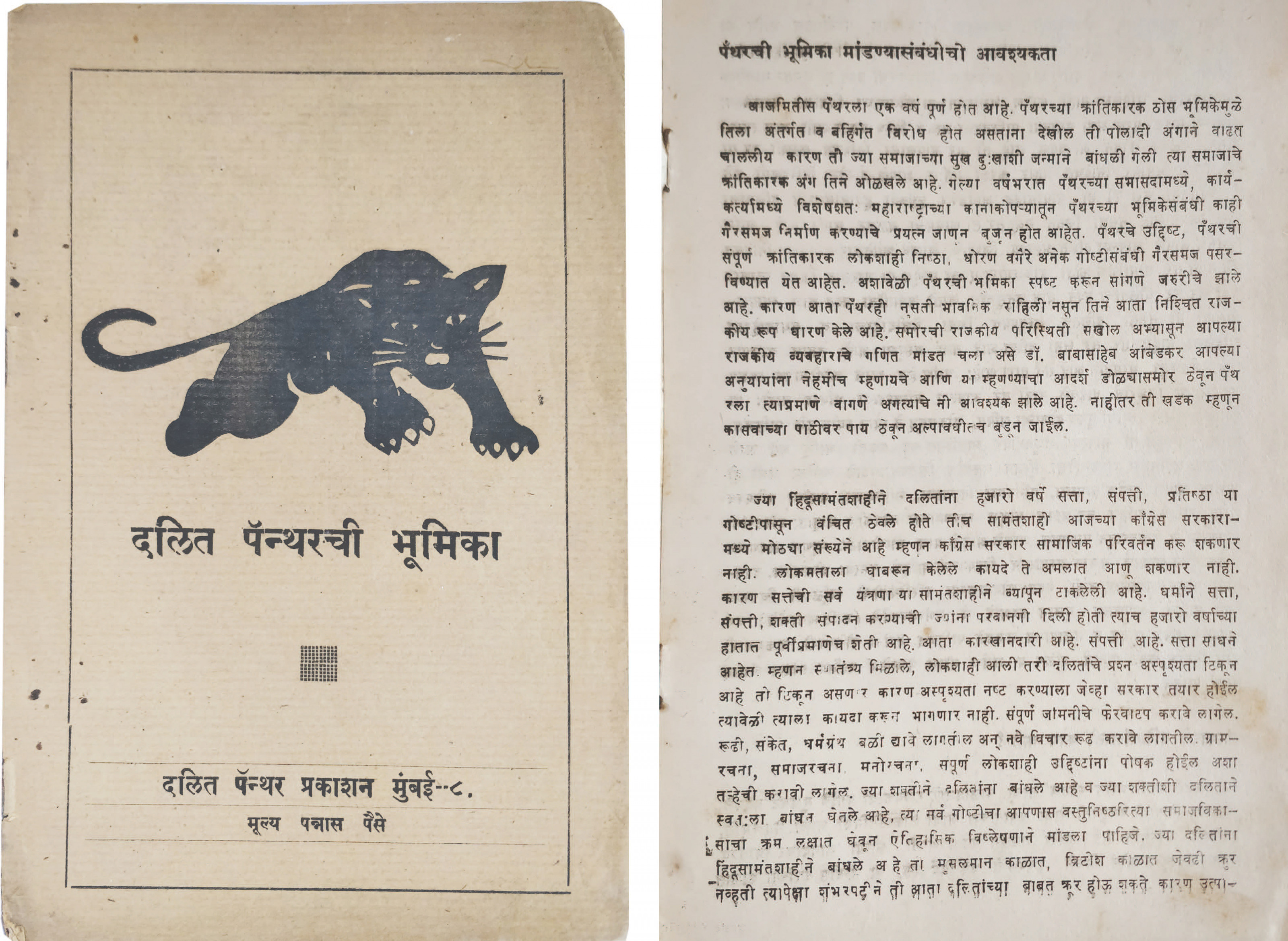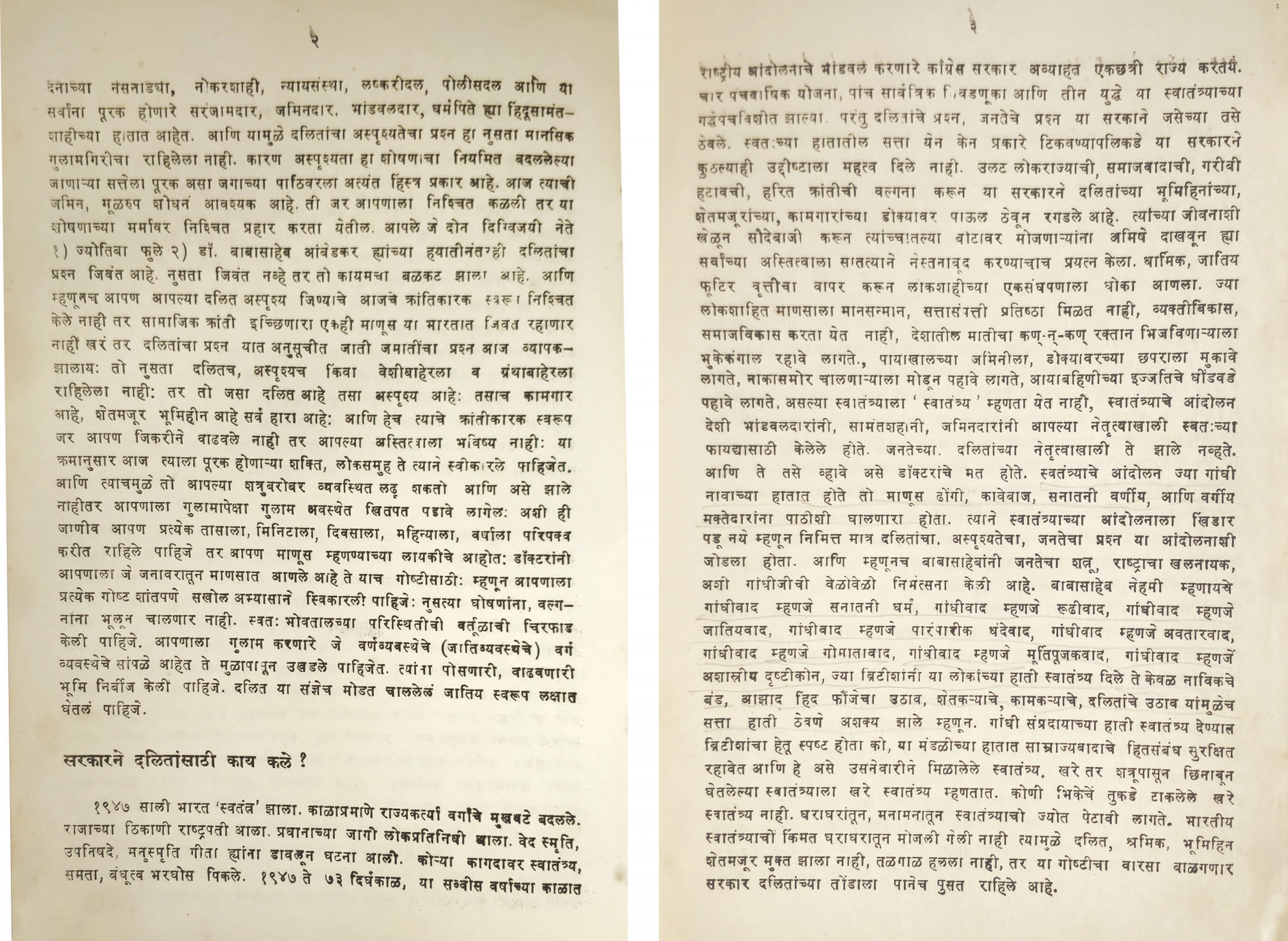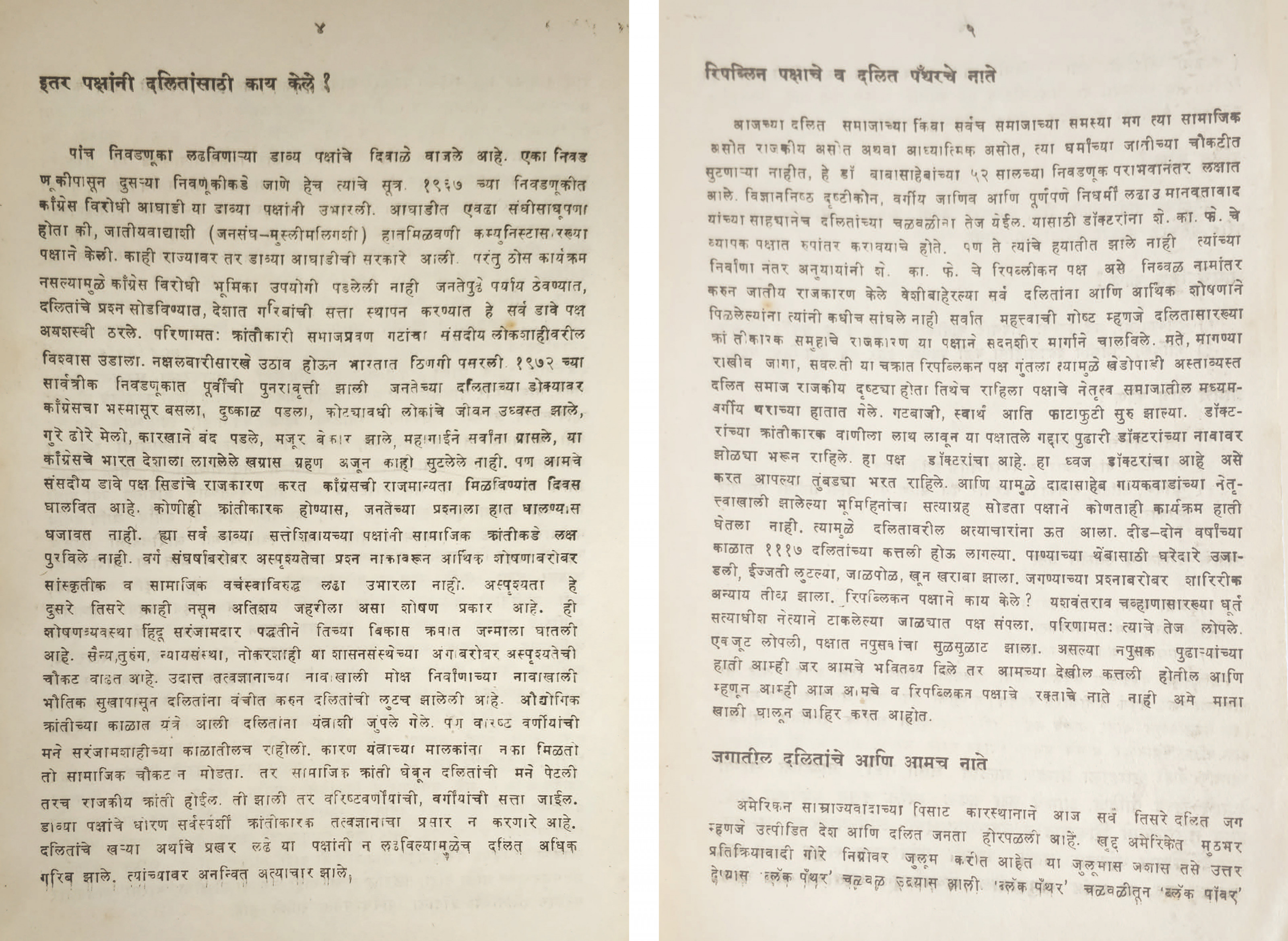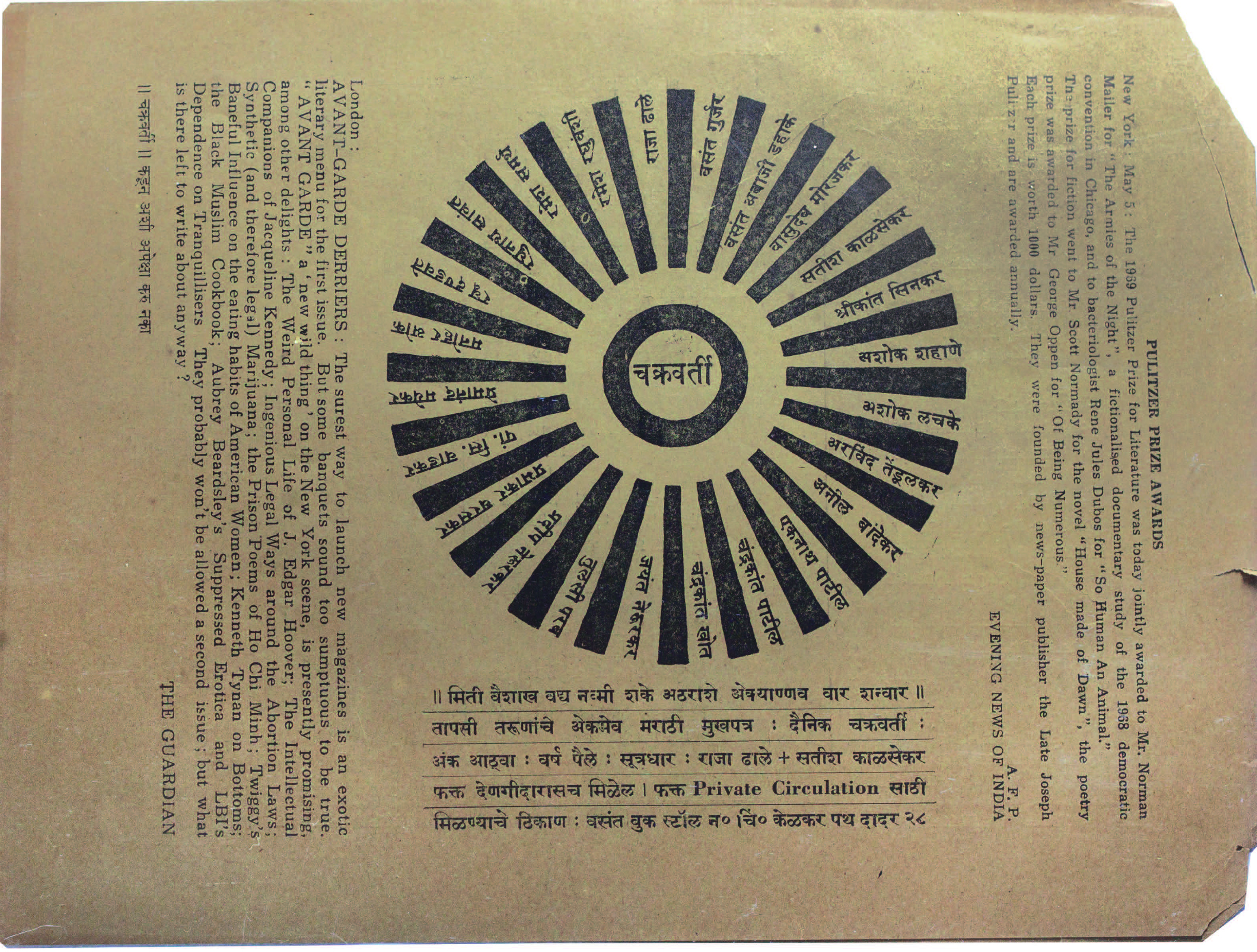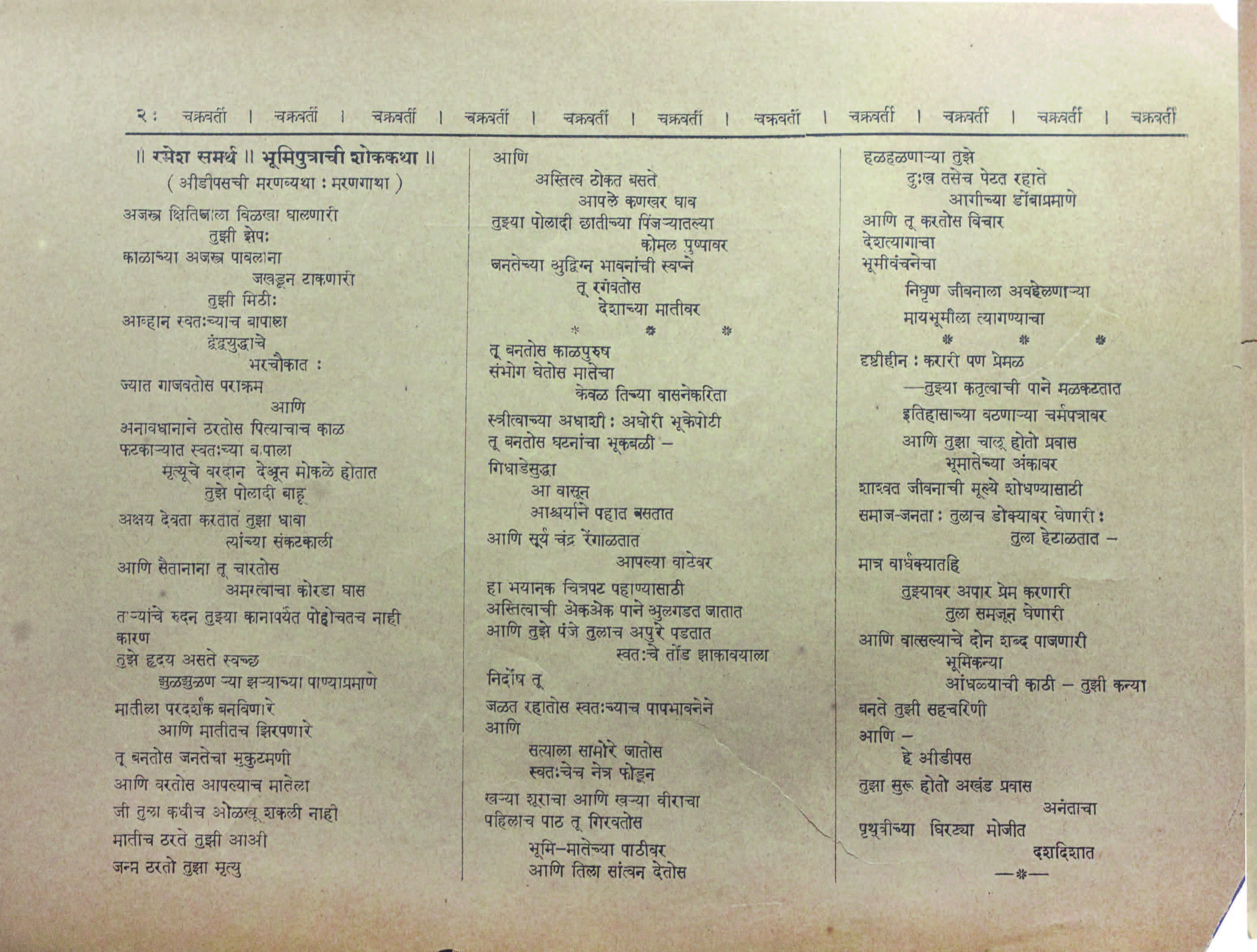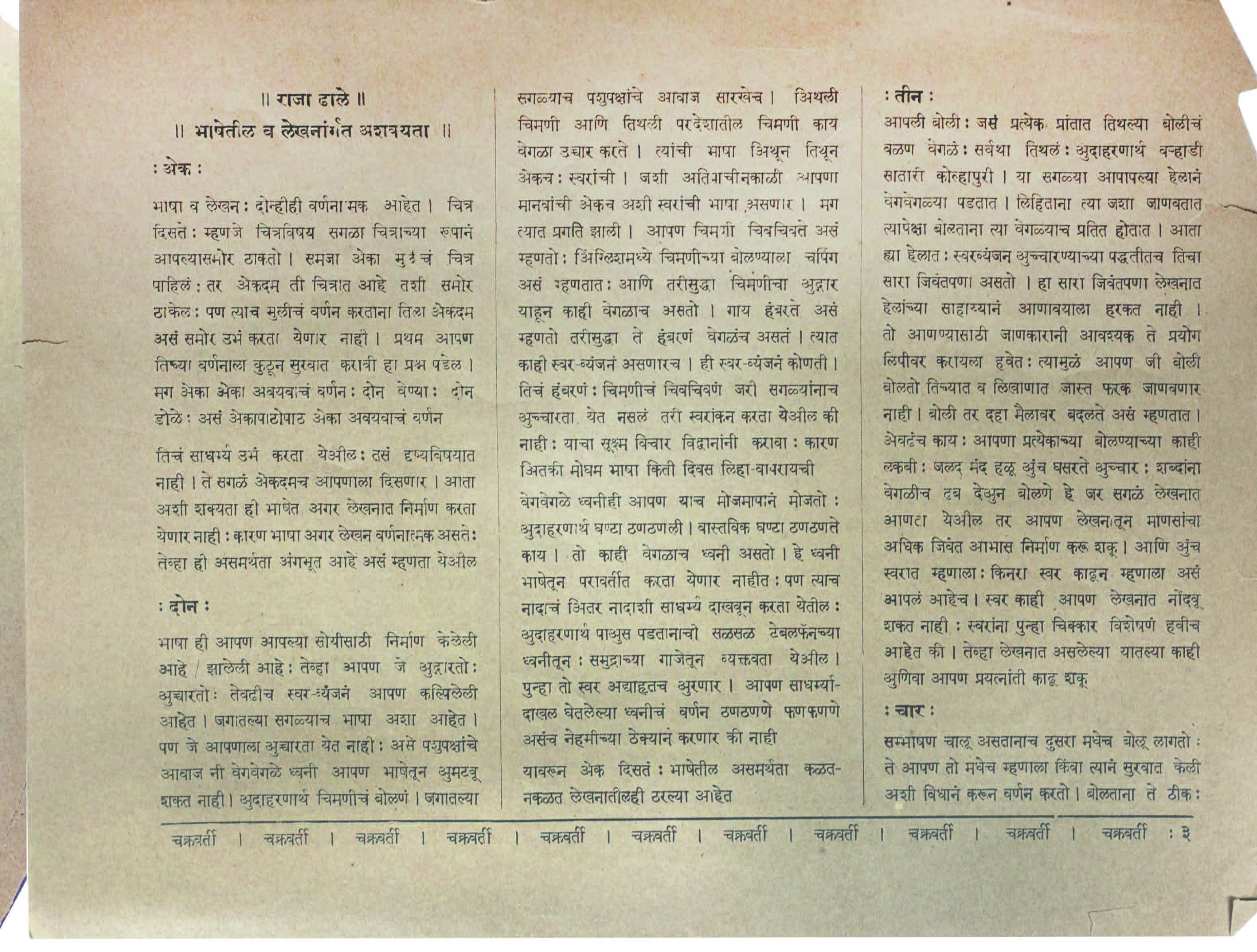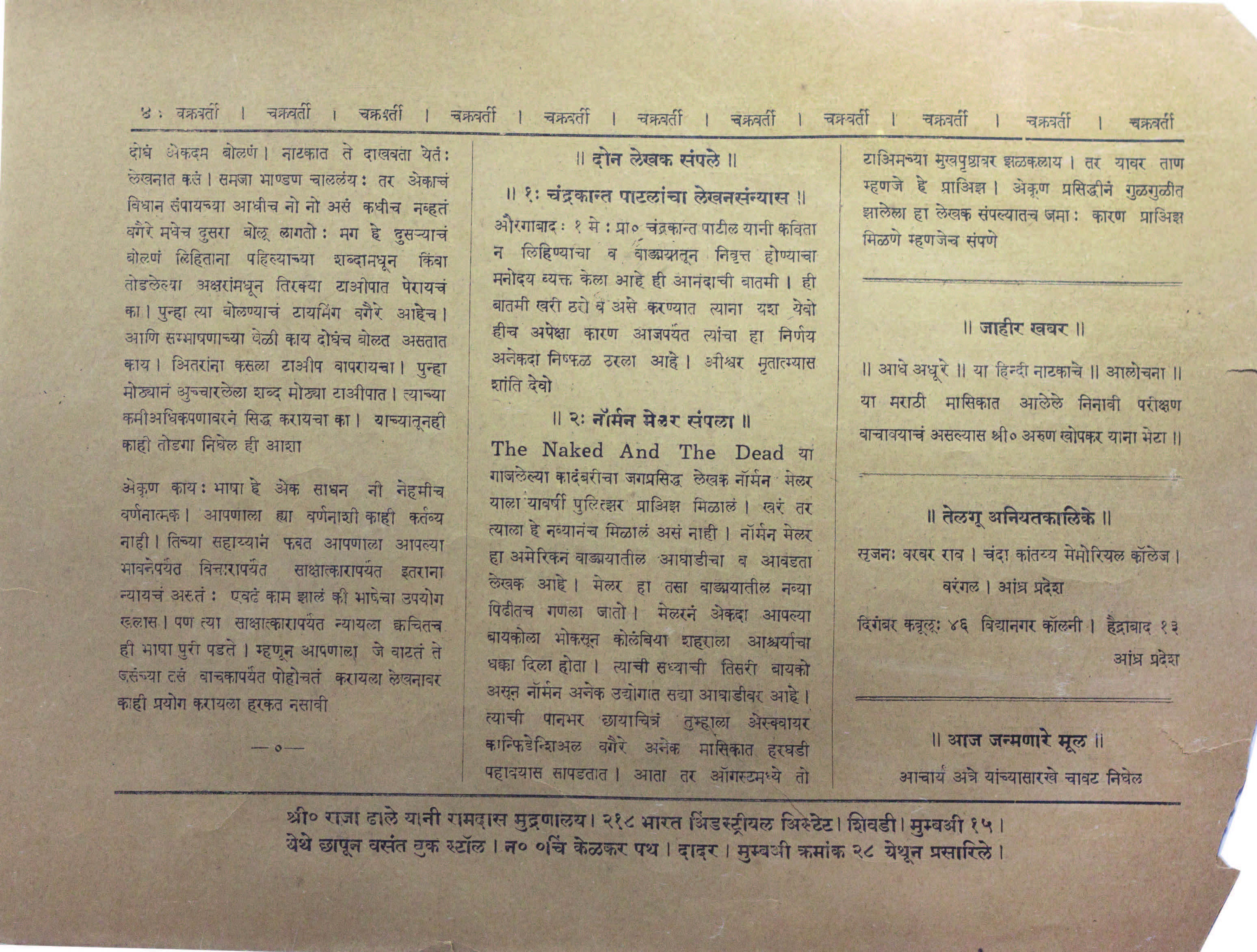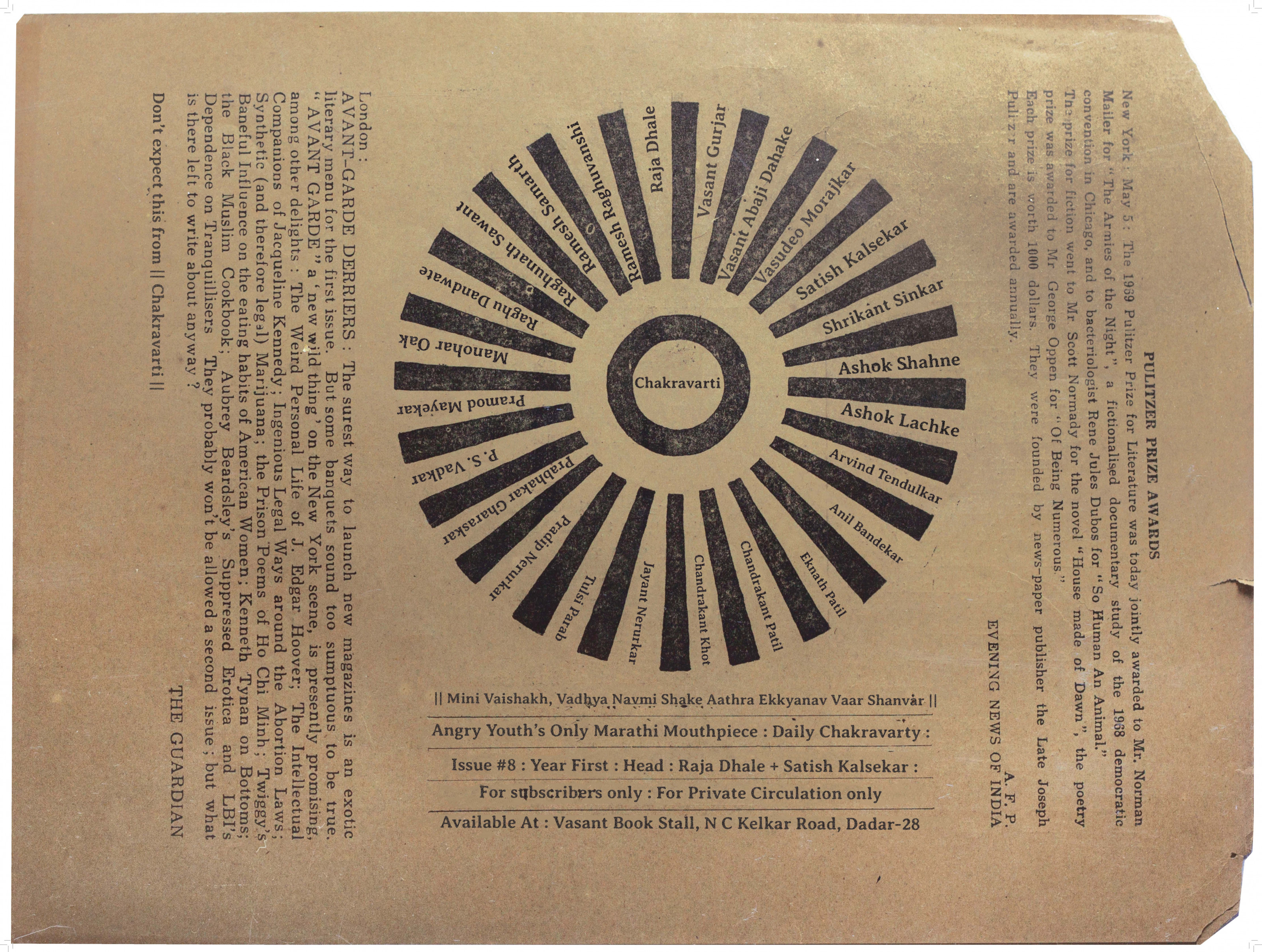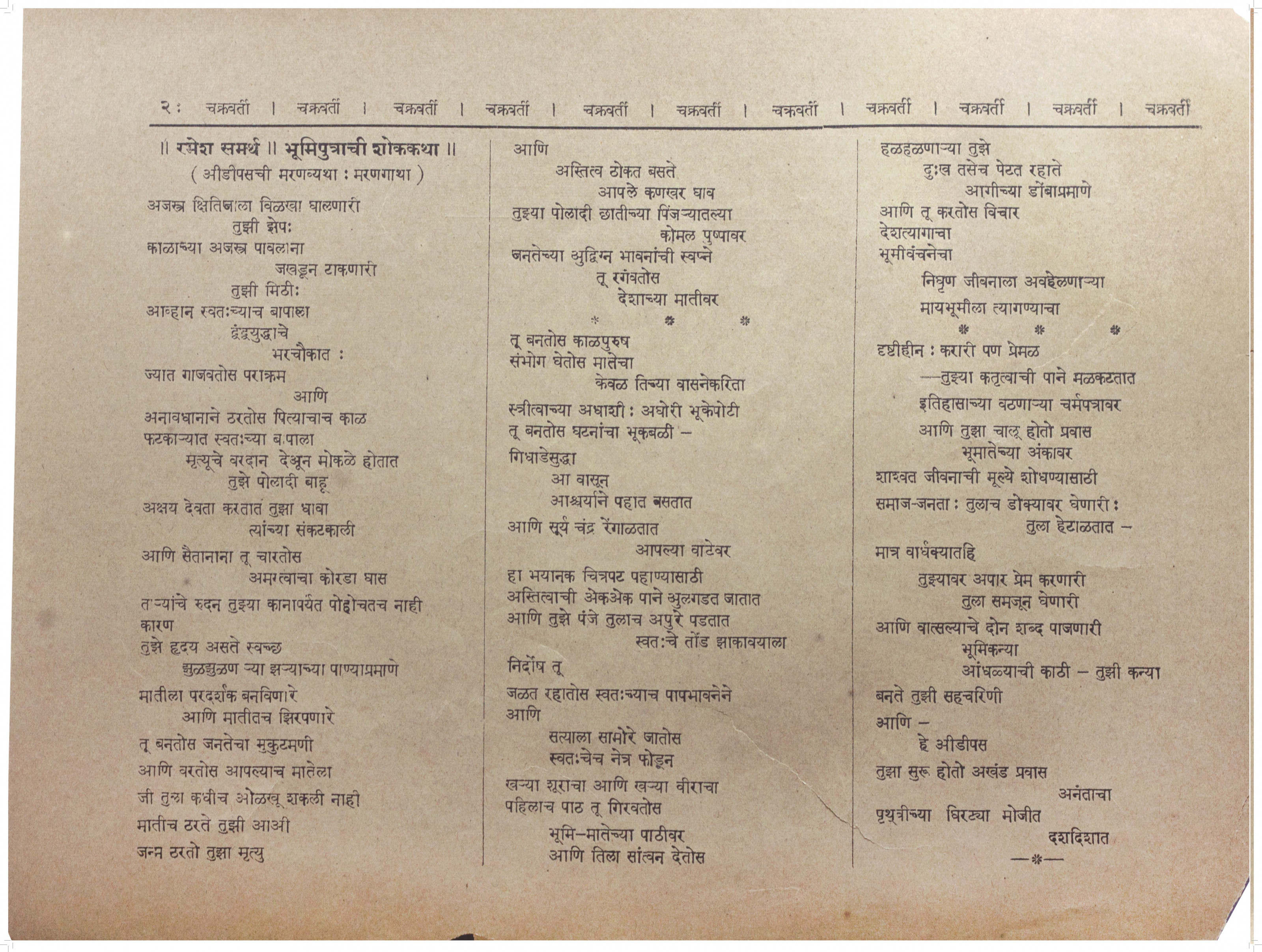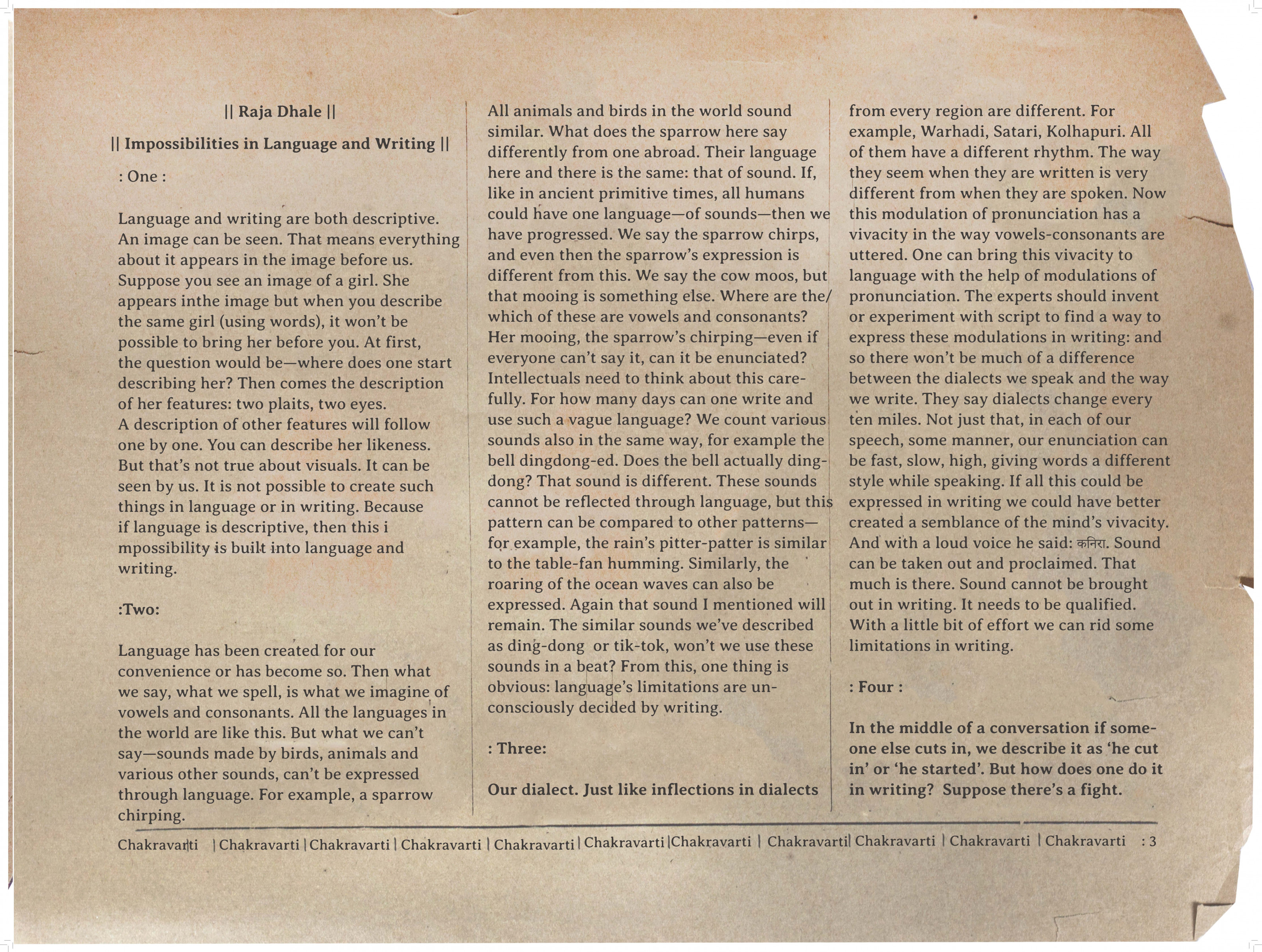What began as a group of friends collecting B-roll footage for a documentary on the Dalit Panthers eventually turned into an archive documenting the literary contributions of members of a social resistance group. The Dalit Panthers Archive is digital space that examines and evaluates the aesthetic qualities and design decisions of various Little Magazines associated with the Dalit Panthers movement.
The Dalit Panthers were founded in Mumbai in 1972 by J.V. Pawar, Namdeo Dhasal and Raja Dhale. Inspired by the Black Panthers who had been active in the United States for about six years at this point, the Dalit Panthers movement sought to combat caste-based violence and oppression, which was compounded by state inaction. Dhasal and Dhale were also active poets and writers and prominent names of the Little Magazine movement in the state of Maharashtra. Like to the Little Magazine movement seen the world over at the time, these Marathi “Unperiodicals” – as they were also known – were a protest against the establishment. This need to counter the dominant discourse and conventions lent itself to the Dalit literary movement, which further leveraged the counter-cultural nature of these magazines to create trailblazing experiments in writing as well as design. It is this overlap that the Dalit Panthers Archive strives to document and showcase.
While the intended documentary never materialised, the documentation they gathered went on to form The Dalit Panthers Archive. They had reached out to collectors who were themselves closely associated with both the movements back in the day. In this way, the digital archive has been able to access the personal collections of Satish Kalsekar and Ramesh Shinde as well as J.V. Pawar, one of the founding members of the Dalit Panthers. Shrujana Niranjani Shridhar – a co-founder of the archive – currently spearheads operations. Along with the help of friends, these collections are scanned and processed. The files are then uploaded onto an Instagram account, which is currently the primary way the public can access the archive. In doing so, the archive also bypasses the physical and logistical constraints of a traditional archive.

Cover of Comrade Ani Octopus a Little Magazine by Umakant Randhir. Published by Avinash Mahtekar Publications.
Shrujana, who is also a practicing visual artist and illustrator, describes the archive as “a way to define Dalit artistic and cultural legacies”. Shridhar’s efforts in documenting this aesthetic are an important contribution to a weakly documented topic, and her interpretation of the objects pushes the definition of what an archive can be. In 2019 she was awarded the “Sher-Gil Sundaram Arts Foundation and Asia Art Archive in India” research grant, which allowed her to dedicate time and effort towards researching and interpreting the material in the archives. The grant, which facilitates histories of ideas, art writing and visual culture, enabled Shridhar to also hire translators and copy editors with whom she worked to translate many of the documents from Marathi. She then poured the translations back into the original layout. Trying to stay true to the design for another language and script came with its own set of challenges. Apart from traditionally typeset prose, the publications also had free verse text in Marathi, whose sentence breaks needed to be adhered to. Onomatopoeic sounds requried special attention, and all of this needed to not feel forced. She describes how this project reminded her of growing up surrounded by dictionaries, assisting her father – a Dalit Marxist Poet himself – in translating various texts to and from Marathi. Her education and training as a designer and early efforts of evaluating others translations and creating her own would have no doubt assisted her to take on such a unique archival project.
The archive applied this technique to map translations to the Unperiodical Chakravarty. Raja Dhale, who went on to be a founding member of the Dalit Panthers, is credited as the publisher of Chakravarty, along with Satish Kalsekar, whose collection the archive’s scans are sourced from. In his attempt to publish a daily dedicated to literature, Dhale juggled multiple roles of a writer, editor and designer while also selecting paper and working with the printers. He managed to print 13 issues in a fortnight with diverse content ranging from commentary on language and writing and art to a satirical “gossip” column as well as advertising for a writer for another Little Magazine. Apart from the content, its design and orientation would also morph to serve the type of text it carried. There was a consistent “masthead” seen through all the issues, which was uniquely placed at the centre of the cover page. Beams of light emerge from the title Chakravarty (चक्रवर्ती) placed at the centre. The spaces between the rays are filled with names of individuals who did not contribute to the magazine directly but whose value to the Little Magazine movement at large is acknowledged. The translations manage to capture such variations in content and tone to a high level of accuracy.
The Dalit Panthers did publish a manifesto, but apart from that, all other writings were either self-published by its members in their own magazines or appeared as contributions to other unperiodicals and posters. Sridhar describes the raw text and illustrations, which were often merged and conveyed the immediacy and urgency of the topics being discussed. Bold hand-lettered text with graphic imagery seen especially in posters amplified the urgency of the issues being written about in them. The unconventional design decisions such as spelling out numerals for issue numbers, date of publication and cost as seen in Raavaa (रावा) and also unique ways to spell words in Marathi, seen in Chakravarty show the attention to detail and level of ownership the authors had on these publications. The paper these magazines were printed on were discarded samples from paper marts. It was common to use printers in Alibag and places outside what was then Bombay, which would further reduce the price of the publications. The preferred method of reproduction was cyclostyling, which added to the immediacy and helped keep costs down, thus allowing the price to be a lot more accessible.

A selection of cover pages of Raava Little Magazine, which featured early works of many Dalit Panther poets.
The archive currently has about 40 scanned objects, ranging from Unperiodicals to posters, more than half of which have been translated. Shrujana is also working on a website that would allow for the archive to exist in an openly accessible digital space and one that could host the research done on the contents of the archive. Her efforts are an important contribution to a deeply under-explored topic. The aesthetic contributions of this work alone should be part of the Indian design and print history canon. These works are also filled with historic significance, but their contemporary relevance is obvious in a country that still struggles with widespread caste-based violence and discrimination. The visible language of political intent fused with the counter-cultural expressions in these Unperiodicals carry marginalised voices that continue to be sidelined by traditional media. And what better way to amplify these voices than to have an archive that reimagines the way material can be preserved and shared.
Links for further reading material on the Dalit Panthers
- 9th July (1972) in Dalit History – Dalit Panthers was Formed
- Black Independence Day
- Excerpt: Dalit Panthers; An Authoritative History by JV Pawar

